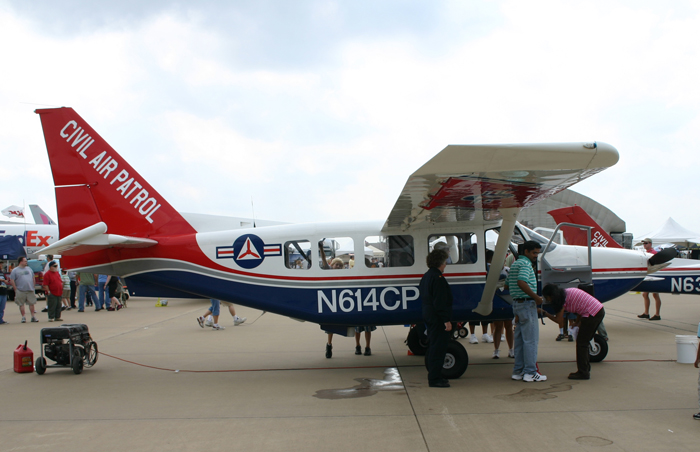| Gippsland |
|
GA8 Airvan |
 Photo: Robert Deering 10/12/2008 Alliance Airport Fort Worth, Texas |
|
The
Gippsland GA8 Airvan
is a single-engined utility aircraft manufactured by
Gippsland Aeronautics of Victoria, Australia. It can
seat eight including one pilot. The aircraft was designed to fill a market niche perceived by the manufacturer between the Cessna 206 and Caravan models. It is used in various roles, including passenger service, freight, sightseeing, parachuting, observation, and search & rescue. As of September 2011[ref], at least 159 Airvans had been produced and delivered. A turbocharged version of the aircraft was in planning from 2004, and the prototype turbocharged aircraft commenced flight testing in October 2006. In February 2009, Gippsland Aeronautocs announced that the Australian Civil Aviation Authority had issued an amendment to the GA8 type certificate to cover the turbocharged variant. This version is designated as the GA8-TC320 and is powered by a 320 HP Lycoming TIO-540-AH1A Turbocharged Fuel Injected Engine. The first deliveries took place in February 2009, with several GA8 TC-320 Airvans delivered to customers in Australia and New Zealand. A turboprop derivative of the GA8, the GA10, is also being developed. It is a slightly stretched 10-seat capacity aircraft powered by a Rolls-Royce 250-B17F/2 turboprop engine. It is planned to retain as much parts commonality with the GA8 as possible. A floatplane version has been considered by the manufacturer and is awaiting certification of the turbocharged engine version. As of September 2010 testing and development has begun for a 200 lb increase in MTOW, due to be certified in the form of a STC estimated December 2010. One GA8 became the first Australian designed and manufactured aircraft to fly around the world, raising funds for malaria awareness. It was piloted by Australian pilots, Ken Evers and Tim Pryse who took off from Bendigo Australia on 8 May 2010, flying over several malaria endemic countries, before returning to Bendigo on 8 July 2010. General characteristics
Performance
Source: Wikipedia |
